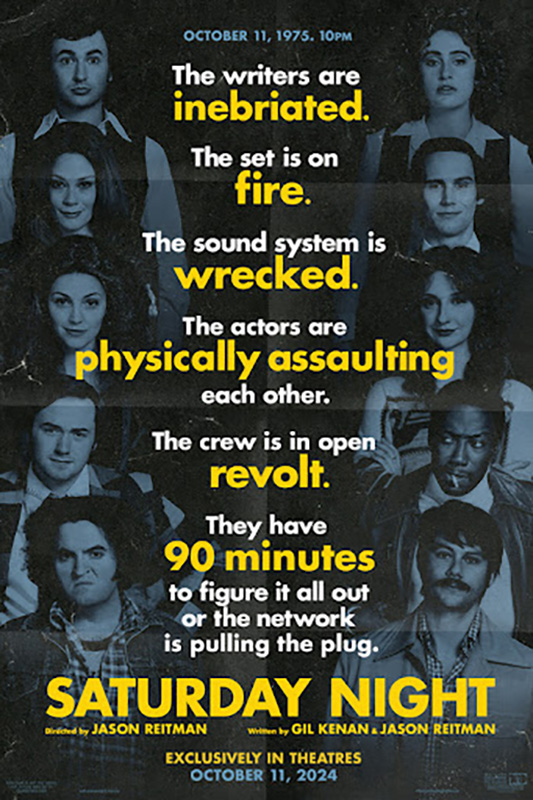To put it bluntly, this past weekend I was having a very bad time. I am extremely prone to sinus infections so I should have suspected that the first time I would get sick during my freshman year of college, it would be a sinus infection.
However, what I did not expect was that it would be one of the worst ones I have had in a while.
My sinuses were absolutely clogged, no doubt about it. My throat was aching like I had swallowed a butcher knife and a persistent pressure headache was making itself very present surrounding my eyes. Like a normal person, I craved comfort.
My boyfriend, a fellow Batman lover, deeply affected by the pollen currently swirling in the air, was feeling much the same. So we decided on a movie night.
As we were watching the movie, I was reminded of how much I absolutely adored this adaptation of the broody hero. The film is brightly colored, the plot is fast-paced, the dialogue is wonderfully witty (and it was made much funnier by the fact that my boyfriend and I had matching Batman voices due to our sore throats, but I guess you had to be there).
If you weren’t aware, in the nerd universe, declaring your favorite Batman film and saying it’s the best is like choosing a religion.
Deep and devout cult followers of these films are everywhere, which means that there are many different strong opinions circling about classic comic superheroes.
There are many different adaptations and recreations of the original Batman that it’s almost impossible to declare one as the true Batman, as all of them are utterly unique.
Being into superheroes is both exhilarating and heartbreaking. Especially with new adaptations being released every few years, there seems to be a constant stream of new additions or new ideas about these beloved characters.
My philosophy about this has always been the same. These movies are fun, superheroes are fun, so why not have fun? An opinion is not the end of the world, and it certainly is not something to be hateful about, which is unfortunately all too common these days.
My personal opinion of the best Batman is because of how I choose to interpret the character of Bruce Wayne, however multifaceted he may be.
Compared to other adaptations of Batman, specifically more modern versions like Robert Pattinson’s “The Batman,” “The LEGO Batman Movie” has a much more upbeat and childish approach to the character. While I do attribute some of this to it technically being a kid’s movie, I still believe that this would have been the outcome had the writing been more adult-themed.
Recent adaptations of Batman have chosen to settle on portraying him in virtually the same way, each time. As a brooding, cold, unfeeling man who doesn’t allow himself to make relationships due to the fear of losing his loved ones.
This is understandable, given his backstory. As a young child, he witnessed the death of his mother and father by a lone gunman. After their death, he was the sole heir to their fortune and Wayne Manor, his family’s estate.
Batman broods alone and pushes away the people who care about him, and when they inevitably do get into trouble (likely because they were associated with him, which is another problem in and of itself), he risks his own life and reputation to save them.
Thus proving that he really did care about them in the first place. After a while, it does really get to be sort of copy and paste.
In other more modern adaptations’ defense, there have been more facets of Bruce Wayne’s character that have been reintroduced fairly recently. Again, in the 2022 film “The Batman,” Robert Pattinson’s interpretation played more into the detective skills of the character, a large part of why he was the only hero to be able to pacify the Joker in the original comics.
The thing that other adaptations have done brilliantly that is not usually featured in Batman’s character is his sense of humor.
In the 1966 live television version of “Batman” (which is mentioned briefly in “The LEGO Batman Movie”), Batman, played by Adam West, was intentionally campy and theatrical with filming. The dialogue and acting of both Batman and Robin, Burt Ward, was flamboyant and tongue-and-cheek.
Both the controversial sequels of the 1989 “Batman,” “Batman Returns” and “Batman Forever”, both make the same stylistic and overly campy filmmaking choices of the original series which garners criticism to this day.
The portrayal of the villains Penguin, played by Danny Devito, and the Riddler, played by Jim Carrey, are two must-see performances that attempt to bring that sense of lightheartedness to the broody hero.
“The LEGO Batman Movie” hits all of the marks for me. The movie is fun, it’s brightly colored and wonderfully flashy, and the dialogue is of course hilarious.
The film opens with a cargo plane carrying explosives flying over Gotham city. The infamous villain the Joker, voiced by Zach Galifianakis, infiltrates the plane and begins his plan to destroy Gotham City.
Batman, voiced by comedian Will Arnett, swoops in to save the day, but unintentionally hurts the Joker’s feelings when he dismisses the clown’s thought of being “Batman’s main villain”.
The supervillain, feeling betrayed by Batman refusing to say he hates him back, decides to concoct a plan to get sent to the Phantom Zone, a high-security prison where only the worst villains are sent.
The rest of the movie follows our beloved hero and his newly adopted son Robin, voiced by Michael Cera, as they try to steal the Phantom Zone projector from fellow superhero Superman, voiced by Channing Tatum, not knowing that they are playing right into the Joker’s hands.
When the Joker’s plan is revealed, Batman must learn to accept help from his son Robin, his butler and father figure Alred, voiced by Ralph Fiennes, as well as new friend police commissioner Barbara Gordon, voiced by Rosario Dawson.
I have learned through watching these Batman movies that I cannot expect these creators to deviate from who the character is. Having been severely traumatized by his parent’s murder, it makes sense why the character of Batman and Bruce Wayne would have trouble accepting the concept of a new family.
While some films have chosen to represent how Batman chooses to deal with this trauma as becoming sullen and brooding, I’ll always prefer the more lighthearted and cheeky version that rarely gets made.
The Batman in this film is unknowingly thrust into most of these onscreen relationships. He didn’t intend to adopt his son Robin, he was simply distracted by the entrance of Barbara Gordon and signed the papers by accident.
Batman did not intend to make or keep these relationships, and often acts uneasy when he realizes how close these people are becoming to him, no matter how much he likes or even craves these relationships.
This is true for most Batmans, but Arnett’s response is in an almost childlike manner, deflecting his feelings by throwing childish tantrums or running away to pout in his Batcave after a scolding from Alfred.
His actions reflect the age he was when his parents died, implying that he feels accepting a new “family” and growing up would erase his old one.
As a child, this movie was funny and brightly colored so I adored it. Now that I”m older, I can appreciate and play with the deeper meaning behind these fun movies.
Compared to most modern adaptations that show an older, more experienced Batman who had already made connections with people, it’s very interesting to watch a fun playful Batman struggle through these experiences.
Kennedy can be reached at [email protected].













